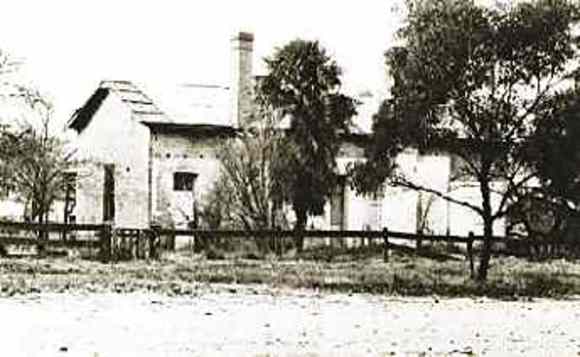| Back to search results » | Back to search page » |
|
FormerCourt House
Location7 Goldsmith Crescent,, CASTLEMAINE VIC 3450 - Property No B1955
File NumberB1955LevelState |
|
Statement of Significance
A long low brick building of 1852 with elegant French doors and a verandah, subsequently modified; with additions of 1856 (reduced in the 1860s). Probably the oldest surviving public or private building in any Victorian gold town and part of the original Government Camp (headquarters for the Mount Alexander Mining district) it was originally the police office and used for sittings of the Supreme Court (including the first on the goldfields in December, 1852 held by Mr Justice (Sir) Redmond Barry) and the County Court (1852-6) and the Court of Petty Sessions (1852-6) and by the Castlemaine Mining Board (1856 until at least 1890).
Part of Castlemaine Historic Area B4894.
Castlemaine grew as a result of the discovery of gold along Forest Creek in July, 1851. By December of that year the population on the field was greater than that of Melbourne. In 1852 Mr Templeton surveyed the township of Castlemaine and in 1853 the first auction of the town site was held.
The Castlemaine goldfield was allegedly the richest alluvial goldfield in the world. Such was the prosperity of the diggers that the townsfolk were optimistically expectant of Castlemaine becoming Victoria's second city. This prosperity and optimism is reflected in the high number of imposing buildings erected in the first few years of the town's life. However, the rich alluvial diggings were worked out within 15-20 years. From the 1870's the town's population began to drift away, but left behind a rich legacy of the town's former prosperity in the form of its buildings.
Within the Castlemaine Historic Area may be found many items of significance. These range from intact nineteenth century streetscapes composed of imposing public buildings to simple miners' cottages. Within the historic area there are a number of identifiable component areas, each telling an important part of the history of Castlemaine. In addition, there are many other places of significance outside of these areas, but still within the Historic Area. These include the former steam flourmill, the Church of England, the Congregational Church and Forest and Barkers Creeks.
Despite the town's topographical confinements to the valley of the two creeks, the wide streets and large buildings convey an atmosphere of grand spaciousness in this central Victorian goldfields town.
Classified: 01/12/1982
Group
Law Enforcement
Category
Court House




